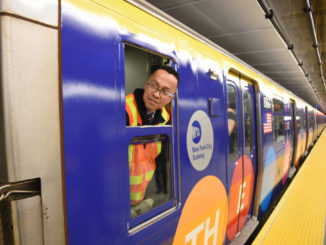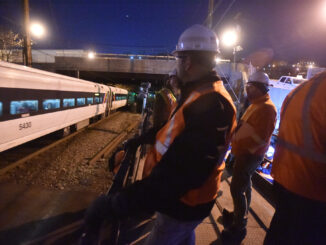SELKIRK, N.Y. – CSX today praised New York Governor George Pataki and the State Legislature, especially sponsors Assembly Majority Leader Paul Tokasz and former State Senator Ron Stafford, for their efforts to encourage further development of the state’s transportation infrastructure by overhauling a tax structure that penalized railroads for investing in New York State.
CSX Corporation Chairman, CEO and President Michael J. Ward commended Governor Pataki for his leadership in crafting the Rail Infrastructure Investment Act of 2002, and his decision to sign it into law: “With his leadership and perseverance in the past and his signature yesterday, Governor Pataki has completed the effort he began to open the door welcoming railroad investment and activity back into New York. We are proud to be here,” Ward said. “This action signals a renewed and vital partnership between the state and CSX that will result in increased opportunities for economic development and growth throughout the Empire State.”
Ward added, “Working with Governor Pataki, Assemblyman Tokasz and Senator Stafford really created the partnerships necessary to make the legislation a reality. We are proud to be part of the team that included the private sector, state and local governments, and in particular, the Executive and Legislative branches.”
CSX has demonstrated that railroads can be tremendous assets to any region’s economic growth initiatives. Until the Legislature’s passage in June and the Governor’s action today, however, New York State’s method for assessing railroad property encouraged railroads to invest their capital elsewhere.
CSX is uniquely situated to promote economic growth throughout the state, from New York City, along both sides of the Hudson River and across the heart of upstate New York. Already, CSX is working with the state to develop new facilities in western New York, is expanding capacity on its critical line along the west side of the Hudson River, and is opening a new diesel locomotive fueling facility in Selkirk.
These efforts will benefit the economy and local communities by attracting sound new development, providing local governments with assistance to address the reduction in revenue, and helping the environment by moving trucks from the highway to the railroad.




